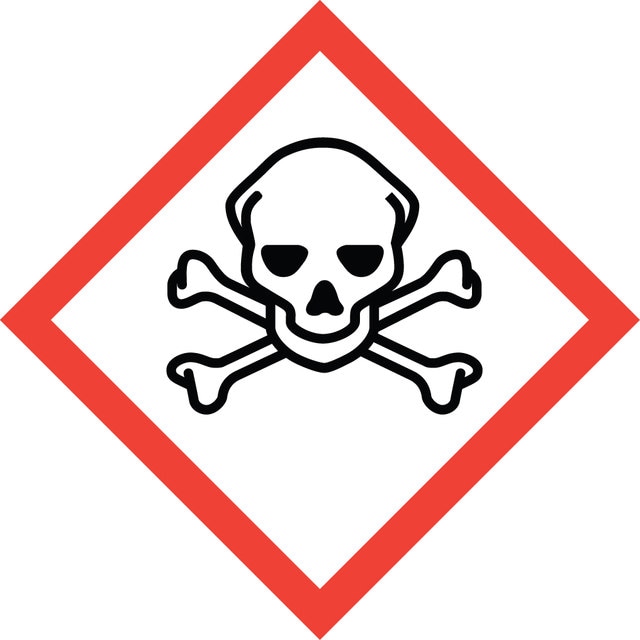Sign In to View Organizational & Contract Pricing
Select a Size
About This Item
Linear Formula:
(C2H5)4N(OH)
CAS Number:
Molecular Weight:
147.26
Beilstein:
3912961
MDL number:
UNSPSC Code:
12352100
PubChem Substance ID:
NACRES:
NA.22
form
liquid
Quality Level
concentration
~25% in methanol (~1.5 M)
anion traces
sulfate (SO42-): ≤1000 mg/kg
functional group
amine
SMILES string
[OH-].CC[N+](CC)(CC)CC
InChI
1S/C8H20N.H2O/c1-5-9(6-2,7-3)8-4;/h5-8H2,1-4H3;1H2/q+1;/p-1
InChI key
LRGJRHZIDJQFCL-UHFFFAOYSA-M
Looking for similar products? Visit Product Comparison Guide
Related Categories
General description
Tetraethylammonium hydroxide (TEAOH) is a quaternary ammonium salt that is commonly used as a strong base and phase-transfer catalyst in organic synthesis.
Application
Tetraethylammonium hydroxide (25% in methanol) can be used as a base in the synthesis of 2-hydroxyacetophenoxime from 2-hydroxysalicylaldoxime and hydroxylamine hydrochloride. It is also used as an organic structure-directing agent in the synthesis of zeolites such as Beta, ZSM-20, and SAPO-34.
Signal Word
Danger
Hazard Statements
Precautionary Statements
Hazard Classifications
Acute Tox. 3 Dermal - Acute Tox. 3 Inhalation - Acute Tox. 3 Oral - Eye Dam. 1 - Flam. Liq. 2 - Skin Corr. 1B - STOT SE 1
Target Organs
Eyes,Central nervous system
Storage Class Code
3 - Flammable liquids
WGK
WGK 3
Flash Point(F)
49.5 °F
Flash Point(C)
9.7 °C
Personal Protective Equipment
dust mask type N95 (US), Eyeshields, Gloves
Regulatory Information
危险化学品
This item has
Choose from one of the most recent versions:
Already Own This Product?
Find documentation for the products that you have recently purchased in the Document Library.
Karen Mruk et al.
Proceedings of the National Academy of Sciences of the United States of America, 109(34), 13579-13583 (2012-08-08)
Calmodulin (CaM) is a ubiquitous intracellular calcium sensor that directly binds to and modulates a wide variety of ion channels. Despite the large repository of high-resolution structures of CaM bound to peptide fragments derived from ion channels, there is no
Min Shen et al.
Vascular pharmacology, 58(1-2), 64-70 (2012-07-24)
Evidence has indicated that resveratrol (Res) produces vasorelaxation and may decrease the coronary heart disease mortality. However, several pathways involved in the mechanism of vasorelaxation are still unclear. This study was designed, therefore, to test the probable ion channels or
Jayabalan Nirmal et al.
Experimental eye research, 116, 27-35 (2013-07-31)
The present study was conducted to test the hypothesis; OCT may be active from blood-to-vitreous for the uptake of its substrates. Ocular uptake of Tetraethylammonium (TEA) across blood ocular barriers and the tissue distribution was evaluated in vivo in New
Dong-Mei Zhang et al.
PloS one, 7(10), e47030-e47030 (2012-10-12)
Cajaninstilbene acid (CSA) is a major active component present in the leaves of Cajanus cajan (L.) Millsp. The present study explores the underlying cellular mechanisms for CSA-induced relaxation in rat renal arteries. Vascular reactivity was examined in arterial rings that
Nanomechanics of cation-π interactions in aqueous solution.
Qingye Lu et al.
Angewandte Chemie (International ed. in English), 52(14), 3944-3948 (2013-03-02)
Our team of scientists has experience in all areas of research including Life Science, Material Science, Chemical Synthesis, Chromatography, Analytical and many others.
Contact Technical Service


